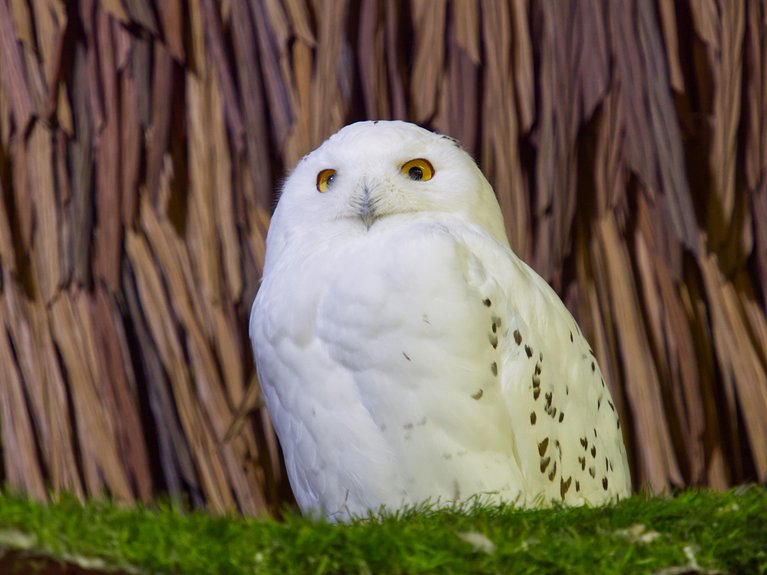For the best raptor watching in Akamas Peninsula, explore the Baths of Aphrodite Trail, a 2.5 km route with diverse habitats attracting buzzards, eagles, and kestrels. Head to Smyies Ridge for elevated views of migratory raptors like European Honey Buzzards and harriers, plus resident vultures. Check out Polis Chrysochous and Khrysokou Bay for wetlands and coastal birds, and the Akamas Headland cliffs for seasonal raptor migrations and seabirds. Spring and autumn offer peak sightings with flocks soaring overhead. More awaits to enhance your experience.
Wichtigste Erkenntnisse
- Visit the Baths of Aphrodite Trail for prime raptor watching amid diverse habitats with clear views of buzzards, eagles, and kestrels.
- Smyies Ridge offers elevated vantage points to spot migratory raptors like European Honey Buzzard and Black Kite, plus year-round Griffon Vultures.
- The coastal and wetland areas around Polis Chrysochous provide excellent opportunities for observing waterbirds, waders, and migrant passerines.
- Akamas Headland’s cliffs and wetlands attract a wide range of raptors during migrations and seabirds like Yelkouan Shearwaters year-round.
- Best viewing times are spring (late February-April) for raptor returns and autumn (August-October) for peak southward migration flocks.
Exploring the Baths of Aphrodite Trail for Raptors
Although the Baths of Aphrodite is famed for its mythological allure, it also offers excellent opportunities for raptor watching along its scenic trail. As you explore the 2.5 km trail west of the Baths within the Akamas Peninsula, you’ll find it’s one of the prime akamas peninsula raptor watching points in Cyprus. The trail winds through diverse habitats, including rugged coastline, dense shrubs, and ancient oak trees, attracting birds of prey like buzzards, eagles, and kestrels. You can expect clear vantage points that overlook the natural reserve, giving you a chance to spot raptors soaring or perched high. The peaceful environment combined with the wealth of indigenous flora supports a rich ecosystem that raptor enthusiasts will appreciate. Whether you’re a seasoned birdwatcher or a casual observer, the Baths of Aphrodite trail offers a focused, accessible way to connect with Cyprus’s wild birds in one of its most celebrated natural reserves.
Smyies Ridge: Prime Spot for Migratory Birds
Topping out above Akamas’ rocky landscape, Smyies Ridge stands out as a premier location for observing migratory birds-especially when you’re keen on spotting raptors during peak passage seasons. This elevated vantage point offers clear views of birds of prey like the European Honey Buzzard, Black Kite, and various harrier species as they navigate the peninsula’s thermals. The ridge also attracts a diversity of other migrants including passerines such as shrikes, warblers, and wheatears, capitalizing on the rich scrub and pine habitats. You’ll find Griffon Vultures and Peregrine Falcons year-round, while spring and autumn bring substantial flocks of cranes, herons, and ducks along the coastal flyways. Smyies Ridge combines accessibility with a commanding position that lets you watch large numbers of migrating birds against the backdrop of Akamas’ wild terrain, making it a must-visit spot for raptor enthusiasts and birders alike.
Birdwatching Near Polis Chrysochous and Khrysokou Bay
Birdwatching near Polis Chrysochous and Khrysokou Bay offers access to several rewarding habitats where you can observe a variety of migratory and resident birds. The coastal and wetland areas around Polis provide excellent vantage points to see waterbirds, waders, and seabirds passing through, especially in spring and autumn. You can relax by the bay and watch flocks of Glossy Ibis and various gulls on the move. The eucalyptus groves near Polis campsite attract migrants and are great for spotting species like Black Francolin. Reed beds on the outskirts of Polis also shelter bitterns, herons, and warblers, adding diversity to your birdwatching. Inland towards Neo Chorio, tracks leading to Smigies Ridge offer opportunities to see Golden Orioles, flycatchers, and shrikes. Overall, this area combines coastal, woodland, and wetland habitats, making it one of the most productive birdwatching sites on the Akamas Peninsula.
Coastal Cliffs and Wetlands Along Akamas Headland
The coastal cliffs and wetlands along Akamas Headland offer some of the best vantage points for observing a rich diversity of birds, including raptors and migrating seabirds. From these cliffs, you can spot impressive raptors like Honey Buzzards, Marsh Harriers, and Pallid Harriers soaring overhead during migration seasons. The wetlands adjacent to the cliffs attract waterbirds such as Glossy Ibis, Spoonbills, and various heron species that rest or pass by offshore.
As you scan the rocky islets and shoreline, keep an eye out for seabirds like Yelkouan Shearwaters and Shags, which are found year-round. Inland areas near the coast are hotspots for wheatears, pipits, and larks, including rarer species like Calandra and Bimaculated Larks, especially in spring. This blend of coastal and wetland habitats makes Akamas Headland a dynamic raptor-watching destination with lots to discover.
Seasonal Bird Movements and Ideal Viewing Times in Akamas Peninsula
Because Akamas Peninsula lies on a major migratory route, you’ll find bird movements follow clear seasonal patterns that shape the best times for raptor watching and other birding activities. Spring and autumn migrations bring the highest raptor diversity and numbers, as birds travel between Europe and Africa. You can expect excellent sightings of species like European Honey Buzzard, Black Kite, harriers, and Griffon Vultures during these periods.
Akamas Peninsula, on a key Europe-Africa migratory route, offers peak raptor watching in spring and autumn with diverse species like Honey Buzzards, Kites, and Vultures.
Key points to bear in mind for timing your visit:
- Spring (late February to April): Watch raptors returning to breed, with increasing activity along the headlands and coastal cliffs.
- Autumn (end of August to October): Peak migration southwards, when large flocks pass through, often visible soaring in thermals.
- Year-round sightings: Resident species such as Peregrine Falcons and Griffon Vultures remain at the peninsula, offering viewing opportunities even outside migration peaks.
Häufig gestellte Fragen
What Gear Is Best for Raptor Watching?
For raptor watching, choose binoculars with 8x to 10x magnification and a 42mm objective lens, balancing magnification and light gathering for a sharp, steady view. Roof prism binoculars are ideal since they’re lightweight, waterproof, and rugged. Avoid overly heavy setups because stability matters more than extreme zoom. Consider models like Vortex Vipers for clarity and durability. A tripod can help if you use higher magnifications around 12x or more.
How Safe Is Birding in Akamas?
Birding in Akamas is generally very safe if you follow basic guidelines. Stay on marked trails to protect fragile ecosystems and avoid disturbing wildlife. The area is well-managed with conservation in mind, so respect nesting sites and maintain a quiet demeanor. Avoid littering and stay alert on uneven terrain or rough paths. Access requires careful planning since regular cars can’t reach all spots; a 4×4 or walking is often necessary.
Can I Handle Injured Raptors?
You should not handle injured raptors yourself. These birds are wild and can be stressed, injured, or even dangerous if approached improperly. Instead, contact local wildlife rehabilitation experts or authorities, such as the Game and Fauna Service in Cyprus, who are trained to safely assist and treat injured birds. Feeding or medicating a wild raptor without expertise can cause further harm. Always wait for professionals to collect the bird.
What Are Ideal Binoculars for Birding?
For birding, 8×42 binoculars strike the best balance between magnification, field of view, and ease of use. They offer sharp, clear images with less shakiness, which is essential for tracking fast-moving birds. The Vortex Viper HD 8×42 is highly recommended for its excellent clarity, durability, and waterproof design. If you want higher magnification for long-distance viewing, consider stabilized 14×50 binoculars like the Kite APC but be mindful they’re heavier and narrower in view.
How to Avoid Disturbing Raptors?
To avoid disturbing raptors, keep a respectful distance and never approach their nests or roosting sites. Move slowly and quietly to prevent startling them, and stay on designated trails to minimize habitat disruption. Avoid sudden movements or loud noises, and never attempt to touch or handle young birds, as this can cause parents to abandon them. Use binoculars or spotting scopes to observe from afar without intruding on their space.
Schlussfolgerung
You’ll find the Akamas Peninsula a raptor hotspot, especially during migration seasons when thousands of birds pass through. Smyies Ridge alone offers a prime vantage for spotting diverse raptors and smaller passerines. Notably, the Baths of Aphrodite Trail hosts an impressive variety of species, including Bonelli’s eagle and the Griffon vulture. Visiting in spring or autumn boosts your chances, as migratory flows peak, making Akamas an unparalleled birdwatching destination in Cyprus.

Das ist Natalie, die seit 10 Jahren auf Zypern lebt. Sie liebt es, die wunderschöne Natur der Insel zu erkunden, wie zum Beispiel stille Wälder und unberührte Strände. Natalie hat viele tolle Erlebnisse zu erzählen. Begleiten Sie sie, wenn sie von ihren Abenteuern auf Zypern erzählt.

